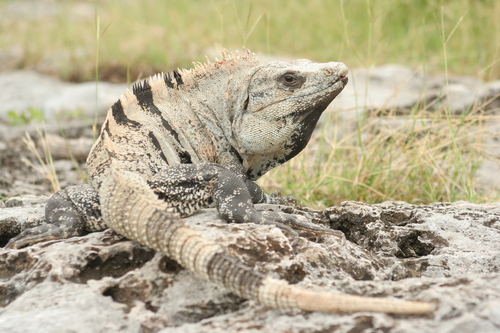
Black Spiny-tailed Iguana
The black spiny-tailed iguana is a quick-footed reptile thriving in Central America’s rocky landscapes. Notable for its vivid crossband patterns and tail spines, it plays a crucial role in its ecosystem by controlling insect populations and dispersing seeds.
15 years
Lifespan
Least Concern
Conservation Status
Stable
Population Trend
Distribution Range of the Black Spiny-tailed Iguana
Ctenosaura similis, commonly known as the black spiny-tailed iguana, is native to Central America. Its geographical distribution primarily spans the countries of Costa Rica, Honduras, Nicaragua, El Salvador, Guatemala, and Panama, extending slightly into the southernmost region of Mexico.
Black Spiny-tailed Iguana's Habitat
Environmental Conditions
The black spiny-tailed iguana is typically found in dry tropical forests, open forests, and areas with plenty of rocks and crevices which it uses for basking and shelter. It thrives in environments with high temperatures and seasonal rainfall patterns that characterize much of its native range. While it can habitually be observed at lower elevations, it is capable of adapting to a range of altitudes within suitable regions.
Ecological Niche
Ctenosaura similis occupies an ecological niche as an omnivore, with its diet consisting of leaves, flowers, fruits, and insects. This adaptability in diet allows it to exploit various food resources throughout its habitat, contributing to its successful establishment in arid and semi-arid environments. The species is also known for its ability to climb, which aids in both escaping predators and foraging for food in forested locales.
Copyright @ Nature Style Limited. All Rights Reserved.
 English
English